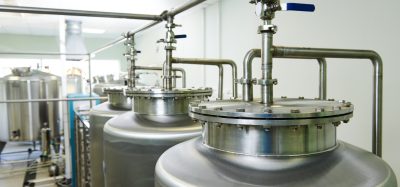COVID-19: the great ventilator challenge
Many COVID-19 patients who are admitted to intensive care in the UK, and globally, require mechanical ventilation. However, our healthcare systems are not prepared for the vast numbers of patients requiring this form of treatment. In this article, Adrian Toutoungi expounds how government and industry is working to push production and get ventilators to patients as soon as possible.
THE RESPONSE to the UK Government’s appeal for ventilators to treat patients of COVID-19 has been impressive. Blue chip and specialist manufacturers from across the UK have answered the government’s ‘Ventilator Challenge’ call with enthusiasm – but also with uncertainty.
Putting medical devices into production at break-neck speed is not a common practice and in the immediate aftermath of the announcement, the best way forward was unclear. Should the UK focus on increasing manufacturing output for an existing respirator design (whether in co-operation with the design owner or by reverse-engineering)? Or should an entirely new design be developed?
As it turns out, a variety of approaches have been adopted:
- an existing respirator manufacturer, Inspiration Healthcare, is increasing production of its own design;
- an Airbus-led consortium of engineering firms will re-tool their production capacity to make respirators to existing designs of Smiths Medical and Penlon;
- a collaboration between Dyson and The Technology Partnership (TTP) came up with an entirely new design, the ‘CoVent’ respirator – as did Gtech, another vacuum manufacturer.
Each approach gives rise to regulatory and intellectual property (IP) challenges that must be resolved. In this article we look at the regulations that apply to medical devices and how governments are allowing manufacturers to bend or break the rules, in order to meet the colossal challenge posed by COVID-19. We also explore the less frequently mentioned IP issues, which could prove to be a serious issue for manufacturers further down the road.
Normally…
The strategies deployed by participants in the Ventilator Challenge to bring ventilators to patients at speed range from up-scaling or adapting existing technology”
Development of Class IIb (medium-high risk) medical devices such as respirators typically takes at least 18 months to get from the drawing board to product launch. A substantial portion of this time period is taken up by compliance with the EU regulatory regime. Under normal circumstances, any medical device that is placed on the market or put into service in the UK must bear a CE mark, which indicates that the product is safe and effective for its intended purpose, in line with European standards. To affix a CE mark to their products, a manufacturer (and its sub-contractors) must undertake a conformity assessment procedure. This involves detailed evaluation of both the design of the device and the manufacturer’s quality system against a set of essential requirements laid out in the EU medical devices directives, implemented in the UK by the Medical Devices Regulations 2002.
For Class llb devices, evaluation of the design includes collection and consideration of data regarding the clinical use of the device. To obtain this, the manufacturer may have to conduct clinical studies, which can take months or even years to complete. A conformity assessment must also be audited by an independent organisation called a Notified Body. If the results of the audit are positive, the Notified Body will issue the manufacturer with a certificate of conformity. On this basis, the manufacturer may affix a CE mark to their device. The audit phase alone can take several months, due to constraints on Notified Body availability – an issue that has become particularly acute in recent months due to delays in re-certification of Notified Bodies.
Make it quick
However, with the disease taking its toll every day, a conventional multi-year development plan would clearly be inadequate. The regulatory authorities have reacted as quickly as has industry, showing a willingness to be pragmatic and flexible.
Firstly, the Medicines and Healthcare products Regulatory Agency (MHRA) issued a specification for ventilators, which sets out the clinical requirements based on “the consensus of what is ‘minimally acceptable’ performance… given the emergency situation”.1
Secondly, the MHRA offered a significant shortcut: it would use its emergency powers under the regulations to deviate on a case-by-case basis from the usual CE-marking requirements (including Notified Body audit) in respect of ventilators.2 This means that, with the approval of the UK Department for Health and Social Care (DHSC) and the MHRA, specified manufacturers will be able to supply ventilators to patients despite the ventilators:
- not bearing a CE mark; and
- not conforming with all essential requirements that apply to them.
As part of the application, the MHRA will ask for details of the product, including a clinical justification for requesting exemption from the regulations, and the expected time to gain CE certification. The MHRA will also expect to see evidence that the device performs as intended – although the MHRA points out that this may just be performance data such as bench testing. The process is intended to ensure that, despite the urgency, the respirators are as safe as possible.
Thirdly, the European Commission (CE) adopted a proposal on 3 April 2020 to postpone the introduction of the Medical Device Regulation (MDR), a new set of stringent requirements on manufacturers, which were due to be introduced in May 2020 and that risk distracting manufacturers from the Ventilator Challenge.
Just don’t sue me
As can be seen, the strategies deployed by participants in the Ventilator Challenge to bring ventilators to patients at speed range from up-scaling or adapting existing technology, whether in co-operation with the design owner or through reverse-engineering, to designing a new device. Adapting or up-scaling in co-operation with the design owner should minimise IP risk. There will be at least an implied licence to use the IP of the design owner and express licensing arrangements can be rapidly implemented. Those who chose to reverse-engineer or design from scratch have taken a more risky path; ensuring the new solution does not infringe third-party IP rights in the earlier design usually requires careful analysis of what potentially relevant IP (including patents, registered designs, design rights and software copyright) may subsist.
The regulatory authorities have reacted as quickly as has industry, showing a willingness to be pragmatic and flexible”
Curiously, even though the Government has powers under much of the UK’s IP legislation to use private-sector intellectual property for its own purposes (so-called “Crown use”), or to authorise third parties in an emergency to do so (by granting a compulsory licence), there does not appear to have been any statements from the Government that it will make use of those powers – unlike other countries such as Israel and Holland. However, the Government has disclosed3 that it has undertaken to indemnify certain designers and contract manufactures under the Ventilator Challenge against liability for infringement of third-party IP rights.
Potential product liability risks must also be considered. If a respirator is found to be defective and causes injury, there will be strict liability (no fault) under the European product liability regime. In most cases, liability will rest with the producer of the product but an “own-brander” holding itself out as the producer by placing its name or trademark on the product can also be liable. Suppliers in the chain are also exposed if they are unable to identify the producer within a reasonable time. Having adequate traceability of the product can mitigate these risks and should not be neglected in the interests of speed.
Collaborators could of course re-allocate this product liability risk between themselves by way of indemnity in their collaboration agreements. Given the extraordinary circumstances, a welladvised manufacturer might even push for an indemnity from the Government or National Health Service (NHS) against any product liability claims and indeed the UK Government also disclosed that it has undertaken to indemnify certain designers and contract manufactures under the Ventilator Challenge against product liability risk.
At the time of writing, it appears that the teams who chose to build on existing technology while involving an established medical devices manufacturer are the most advanced: ventilators from the Airbus/Smiths Medical collaboration are scheduled for delivery to the NHS in the week commencing 6 April,4 while the Dyson/TTP team is still awaiting approval from the MHRA. The UK, and the world, is waiting on projects such as these to deliver. Over the coming weeks, we hope to see this extraordinary collaboration of government and private industry meet the demand of healthcare systems, and ultimately save lives.
About the author
Adrian Toutoungi is a partner in the Life Sciences team of international law firm Taylor Wessing. He works with many of the world’s most dynamic medtech, pharmaceutical and biotech companies on regulatory issues, and also advises on IP strategy and licensing issues, fund raising and complex alliances and partnering arrangements. Adrian works from Taylor Wessing’s Cambridge office.
References
- Specification for ventilators to be used in UK hospitals during the coronavirus (COVID-19) outbreak [Internet]. GOV.UK. 2020 [cited 8 April 2020]. Available from: https://www.gov.uk/government/publications…
- Exemptions from Devices regulations during the coronavirus (COVID-19) outbreak [Internet]. GOV.UK. 2020 [cited 8 April 2020]. Available from: https://www.gov.uk/guidance/exemptions…
- In a ministerial letter of 3 April 2020 from Mr Michael Gove to a Parliamentary oversight committee.
- First new ventilators to roll off production line this weekend as industry answers call to step up manufacturing [Internet]. GOV.UK. 2020 [cited 8 April 2020]. Available from: https://www.gov.uk/government/news…
Related organisations
Airbus, Dyson, European Commission (EC), Gtech, Inspiration Healthcare, National Health Service (NHS), Penlon, Smiths Medical, The Technology Partnership (TTP), UK Department for Health and Social Care (DHSC), UK Medicines and Healthcare products Regulatory Agency (MHRA)










